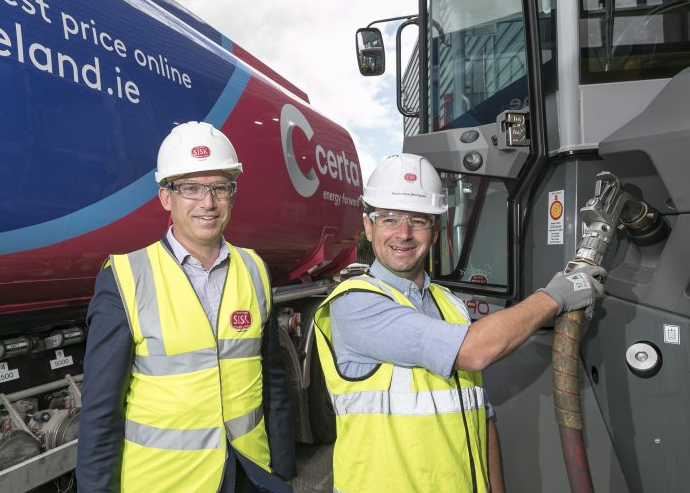Sisk becomes first contractor in Ireland to switch to HVO fuel across all sites

Sisk, one of Ireland’s largest construction companies, has announced that it will switch to HVO fuel by the end of 2022, following successful trials.
Sisk is the first construction business in Ireland to mandate the switch to HVO across all sites, supplied by Certa.
HVO is a fossil-free biofuel typically made by reacting waste vegetable oils and animal fats with hydrogen to create fuel suitable for use in diesel engines.
The switch to HVO will deliver Sisk a 90% reduction in CO2e and 85% reduction in other harmful emissions such as particulate matter.
The amount of diesel that Sisk uses annually emits 3,000 tonnes of CO2, which accounts for 60% of its scope 1 carbon emissions.
Sisk was the first construction business in the UK to utilise this sustainable fuel at its Northstowe project in Cambridgeshire for its client, Homes England. This project used circa 1.5 m litres of HVO.
In April, 100% of site fuel procured by Sisk projects in the UK was HVO. As a result, carbon emissions of Sisk UK operations have been reduced by 36%.
The business is also exploring a switch to HVO and similar supply arrangements for its European projects.
Ian O’Connor, energy manager, John Sisk & Son said: “Our transition to HVO is a major strategic step change and it will positively impact our carbon performance immediately. We estimate a 60% reduction of our Scope 1 emissions when the entire company is using this fuel.
“We have set ourselves ambitious targets to achieve carbon neutrality by 2030 and this is another important milestone on the journey. We will continue to monitor new technologies and innovation to ensure we are at the forefront of clean and efficient sustainable solutions.”
Andrew Graham, managing director, Certa Ireland said: “We are delighted to be supplying Sisk with our ground-breaking GD+ HVO product. This is a great opportunity to facilitate Sisk in their journey to achieve Net Zero by 2030.”








